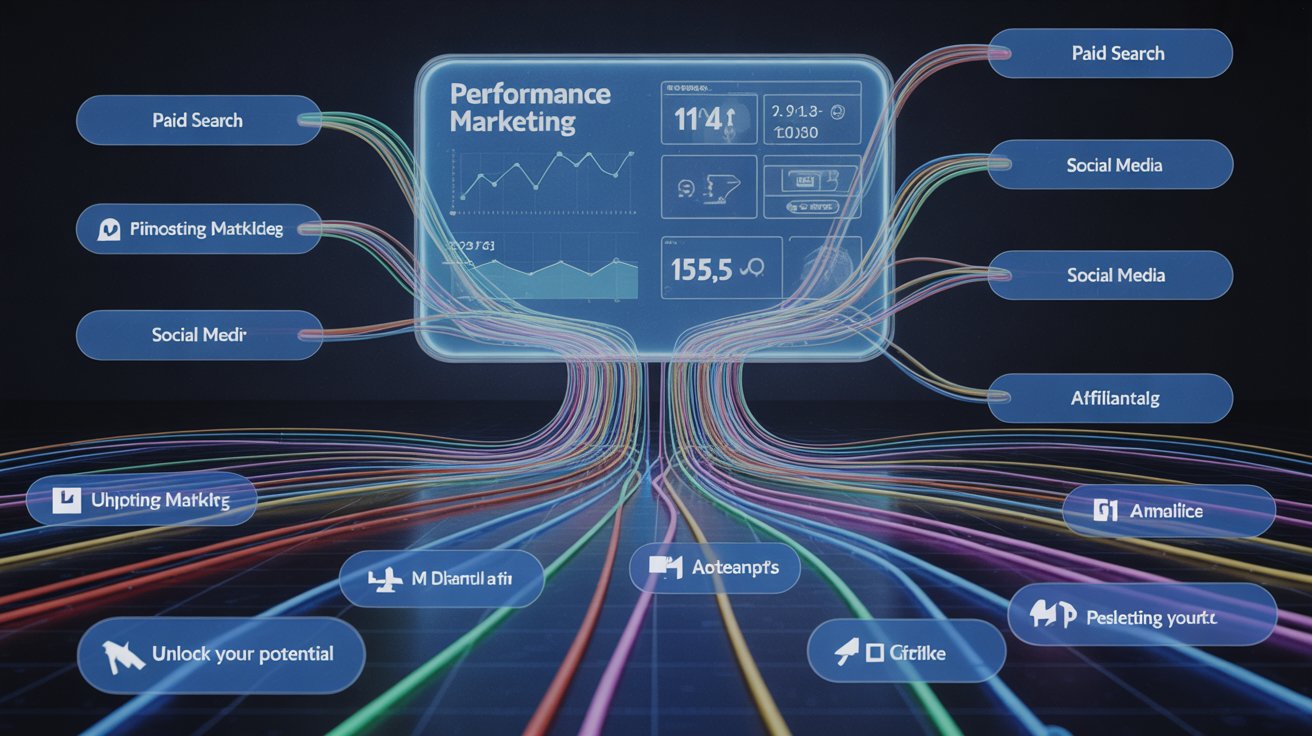Performance marketing is not just another buzzword—it’s the backbone of ROI-driven advertising in the digital age. Whether you’re running an e-commerce brand, working in a startup, or managing ad campaigns for clients, performance marketing gives you the power to track, measure, and scale your results like never before.
Let’s break it all down in a super practical guide that teaches you exactly what it is, how it works, and how you can start implementing it today.
What is Performance Marketing?
Performance marketing is a results-based marketing strategy where advertisers only pay when a specific action is completed—like a click, lead, sale, or app download.
Think of it as the “pay-for-results” model.
Unlike traditional advertising (like TV or radio), where you pay for reach or impressions, performance marketing is all about accountability. You know what you’re paying for—and you only pay when it works.
Common Performance Marketing Channels:
- Social Media Ads (Facebook, Instagram, TikTok)
- Search Engine Marketing (Google Ads, Bing Ads)
- Affiliate Marketing
- Native Advertising (Taboola, Outbrain)
- Influencer & Partnership Campaigns
How Performance Marketing Works
The process is data-driven, trackable, and ROI-focused. Here’s a basic breakdown of how a performance marketing campaign runs:
- Define Your Goal: Is it leads? Sales? App installs?
- Choose the Platform: Depending on where your audience hangs out.
- Set Up Tracking: Use UTM links, conversion pixels, and analytics tools.
- Launch Campaigns: A/B test creatives, audiences, and ad formats.
- Analyze & Optimize: Real-time data helps improve performance on the go.
With the right setup, you can literally watch your ads work (or fail) in real time.
Types of Performance Marketing
There are several categories within performance marketing. Each offers a unique approach to how you engage and convert your audience.
1. Cost Per Click (CPC)
You pay when someone clicks on your ad. Great for driving traffic fast.
2. Cost Per Impression (CPM)
You pay per 1,000 views. More about visibility and reach than direct conversion.
3. Cost Per Acquisition (CPA)
You only pay when a user takes a desired action like a purchase or sign-up.
4. Cost Per Lead (CPL)
You pay when someone submits a lead form—common in B2B.
5. Cost Per Install (CPI)
Perfect for mobile app marketers looking to grow downloads.
Why Performance Marketing Works
Here’s what makes performance marketing an absolute favorite among growth hackers, startups, and big brands alike:
✅ Measurable: Every click, view, or sale is tracked.
✅ Cost-Effective: You only pay for results.
✅ Scalable: Got a winning ad? Put more budget behind it.
✅ Targeted: Advanced audience segmentation lets you find the right people.
✅ Real-Time Optimization: Adjust campaigns instantly for better ROI.
It’s like having a salesperson who works 24/7—and you only pay when they close a deal.
Must-Have Tools for Performance Marketers
To run successful performance campaigns, you need the right stack:
- Google Analytics & Tag Manager (to track performance)
- Facebook Ads Manager (for audience targeting & A/B testing)
- SEMrush / Ahrefs (for keyword & competitor insights)
- UTM Builder / Bitly (for clean tracking links)
- CRM platforms like HubSpot or ActiveCampaign (for lead nurturing)
These tools help you measure every inch of your marketing funnel.
Key Skills to Master in Performance Marketing
Wanna become a performance marketing pro? Here’s what to focus on:
Data Analysis: Know how to read metrics like CTR, ROAS, and CAC.
Copywriting: Your ads must sell in a few seconds.
Audience Targeting: Who you show the ad to matters just as much as what you say.
A/B Testing: Run experiments constantly to find what works.
Funnel Strategy: Understand how awareness leads to conversions.
Master these, and you’re halfway to becoming a performance marketing ninja.
Performance Marketing vs. Traditional Marketing
| Feature | Traditional Marketing | Performance Marketing |
| Payment Structure | Upfront payment | Pay-per-action |
| Measurement | Hard to track | Real-time analytics |
| Flexibility | Static | Dynamic and adjustable |
| Cost Efficiency | Expensive | Highly cost-effective |
| ROI Visibility | Low | Extremely high |
Getting Started: Your Action Plan
- Pick a Channel: Start with Meta Ads or Google Ads—they’re beginner-friendly and widely used.
- Choose an Objective: Lead gen? Sales? Email signups?
- Set a Budget: Start small. Even $5/day can yield insights.
- Run Experiments: Test headlines, creatives, CTAs.
- Track and Optimize: Kill poor performers, scale winners.
Keep testing, keep learning, and you’ll find your winning formula.
FAQs About Performance Marketing
Q1: Is performance marketing only for big companies?
Nope! It’s ideal for small businesses and startups, too. You can start with small budgets and scale up based on success.
Q2: What’s the difference between SEO and performance marketing?
SEO focuses on organic growth, while performance marketing is paid and immediate. Both work well together.
Q3: How do I track conversions?
Use tools like Google Analytics, Facebook Pixel, and UTM parameters to measure user actions on your site.
Q4: Do I need a website to run performance campaigns?
Yes, most platforms require a landing page. Even a simple one-pager will do to begin with.
Q5: Can I run performance ads myself or should I hire someone?
You can absolutely DIY using online tutorials, but for complex funnels or bigger budgets, hiring a pro can save time and money.

